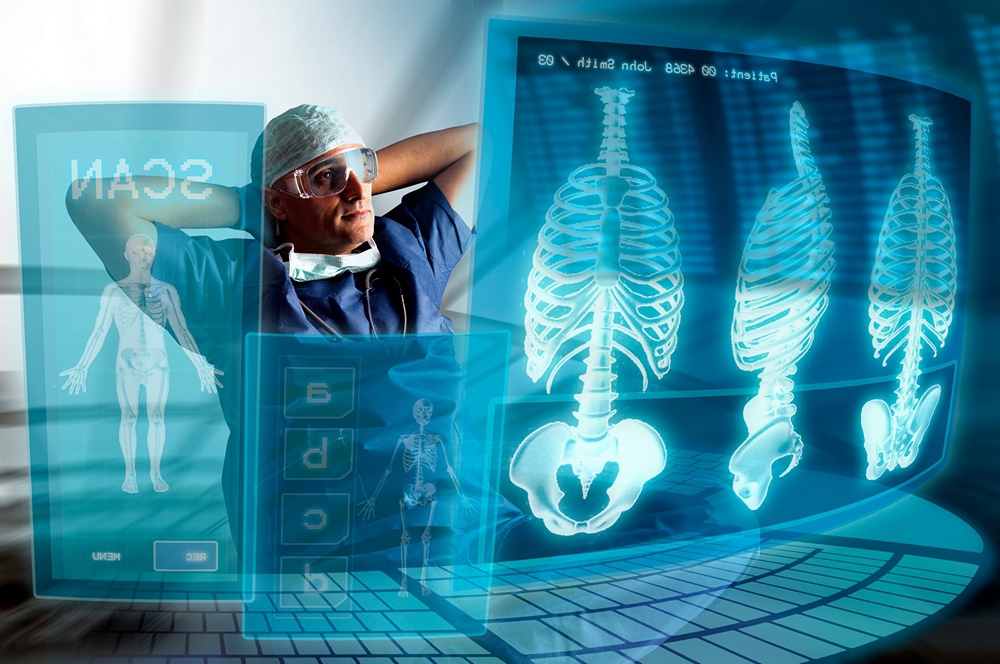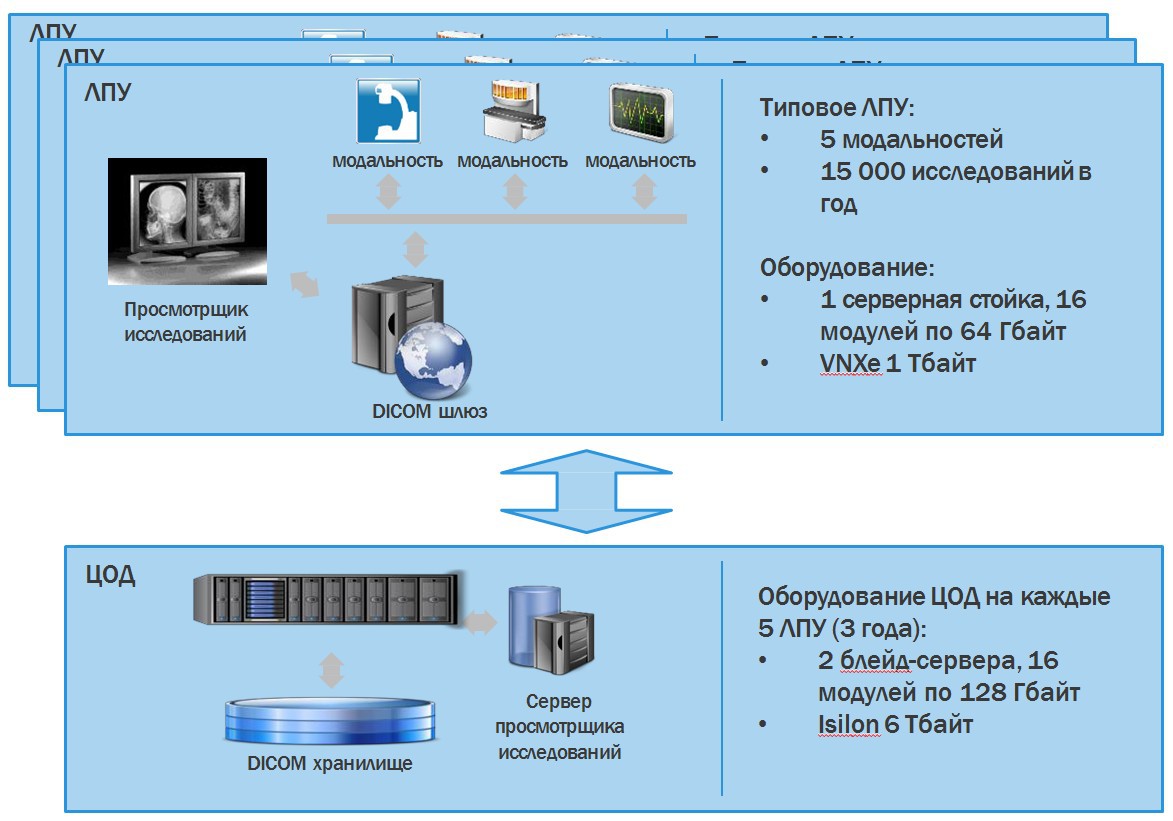Repository of research results by the method of radiation diagnostics

Many of us have been in a situation where an x-ray or fluorography is done in a clinic, and then you need to carry these large and uncomfortable pictures to your doctor. And how many kilograms of nerves we spend standing in lines at the registry to get our medical records, which often do not appear on the spot or even get lost. How many person-days do we spend telling doctors the histories of our illnesses and illnesses, forgetting important details and exaggerating insignificant ones?
We can cite such an incident in the life of one of our employees: in his youth, he suffered from pneumonia, as a result of which all subsequent years on the fluorograms, blackout in the lung was recorded. The district doctor knew this very well. But once the hero of this story had to do fluorography in another clinic. And there, upon seeing the stain, he was almost hospitalized by force, suspecting tuberculosis. No stories about pneumonia helped, I had to go to my clinic, ask for my old pictures and take them as evidence. But even after that they looked at him askance and tried to force him to take control pictures weekly. But all these inconveniences and hassles could have been avoided if our country had a well-developed system of medical data warehouses at the regional and city levels. A doctor could go in there and discover the patient’s entire medical history from birth. Many questions would be removed and a lot of time saved.
The lack of storage systems that aggregate medical information is not unique to cities and regions. Many networks of clinics, as well as large hospitals, clinics and medical centers, each with several buildings, also still do not have their own unified storage systems. And the doctor, taking the patient in one building, is forced to request physical records from doctors from other buildings, if the diagnostic and treatment procedure requires it.
There is another problem stemming from the lack of unified storage systems. She is not so obvious. All kinds of images and research results “settle” in the local storages of the apparatus and devices on which they were obtained. And due to the limited available memory, the oldest entries are periodically deleted. Therefore, if you were investigated several years ago and you needed to get these results, then there is a risk that they are already deleted.
Vendor-independent archives of medical images
Modern medicine uses all kinds of data obtained in the course of patient research using radiation diagnostics: radiographic images, ultrasound, MRI and computed tomography, echocardiograms and much more. Most often, the results of the study are presented in graphical form. And the traditional way to exchange this data is to print it with a printer and then send it. With all the inconveniences resulting from this.
Most (if not all) of these devices support the DICOM (Digital Imaging and Communications in Medicine) industry medical standard. This is an industry standard for the creation, storage, transfer and visualization of medical images and documents of examined patients. TCP / IP is used to transfer information from medical equipment to the PACS-system (Picture Archiving and Communication System) and to communicate between PACS-systems.
Most manufacturers of medical equipment also supply with their products PACS and workstations for the processing of research by diagnostic doctors. But the possibilities of such solutions are limited, since equipment manufacturers, as a rule, do not set themselves the task of building global research storage systems. And besides, they want to protect their interests in the supply of workstations (rather expensive). For example, manufacturers of medical equipment “bind” consumers to their workstations, using the so-called research while maintaining the processed research. "Proprietary" DICOM tags that do not allow you to work normally with these studies from workstations of other manufacturers. The problem becomes even more acute if the clinic (or network of clinics, or even a region) decide to change the PACS / workstation provider. Migration projects can take months, and in some cases fail.
As you know, such a problem could not remain without a solution. Today, so-called vendor-independent archives (VNA - Vendor Neutral Archive) from companies that are not suppliers of medical equipment. These archives also work under the DICOM protocol, and in DICOM networks, of course, are present as PACS. Vendor independence is provided by converting proprietary tags to public ones at the time the research is archived. Naturally, each VNA provider claims complete vendor independence. But since manufacturers of medical equipment do not publish, for obvious reasons, information on the use of proprietary tags, the actual degree of vendor independence depends only on the experience of a particular VNA provider. The more projects implemented, the larger they are, the more different PACS from different providers integrated into the archive, the more experience and information on using proprietary tags from the provider. And the quicker his reaction in case of a change by any manufacturer of medical equipment methods of using these same proprietary tags.
In addition, when building global archives at the regional or even country level, the experience of a VNA provider in managing very large amounts of information, including infrastructure distributed across several data centers, is also important. After all, the size of one DICOM study, for example, MRI, can reach 4.5 GB. The risks are obvious - the VNA provider may declare that its decision is ready to work with any amount of information, but in fact it may turn out that from the first few terabytes the response time of the archive increases. It even happens that there is a loss of information.
To solve the problem of dependence on the final (expensive) workstations, VNA providers offer, as part of their solutions, tools for viewing medical research. For some vendors, this is simply a lightweight viewer, for some it is a full-fledged (often web-based) workplace of a doctor-diagnostician.
In our country, such archives at the regional level began to be built during the period of mass introduction of the IIA (Medical Information System) as part of the healthcare modernization program. Some regions have successfully built such archives and operate, although, as a rule, far from all clinics in the region are connected to the archive, and not all studies of even connected clinics fall into the central archive. Now the Ministry of Health of the Russian Federation has breathed new life into these projects, including the creation of regional archives in the roadmap until 2018.
EMC Solution
A typical architecture of the vendor-independent archive of medical images offered by EMC is as follows:

- MPI - medical institution: hospital, clinic, medical center, etc.
- Modality - an apparatus for medical research: an x-ray unit, a computer tomograph, an ultrasound machine, etc.
- Research Viewer is the primary tool for doctors to work with data. It is a web application written in HTML5, which allows it to work even on weak “thin clients”. At the same time, the viewer has all the capabilities of a workstation. In Europe, it is licensed as a diagnostic tool and can be fully used in the diagnosis.

Medical devices - modalities - generate research data that goes to a local caching server (DICOM gateway). This is necessary to ensure uninterrupted operation in the event of a lack of communication with the central repository. If the connection is stable, then the data is automatically sent from the gateway to the repository, if the connection is unstable, then the data is sent according to the schedule or as the connection appears. Data is stored on a caching server for some time, which depends on the capacity of the server's storage system. Moreover, all requests from the "thin clients" are processed first by the caching server, and if there is no necessary information on it, then it is requested in the data center.
Ensuring vendor independence and affirming the possibility of building global archives is based on the vast experience of EMC. The specificity of our products is the management of huge amounts of information both at the hardware and software levels. Our portfolio has a large number of implemented solutions, including projects at the country level (for example, Finland).
